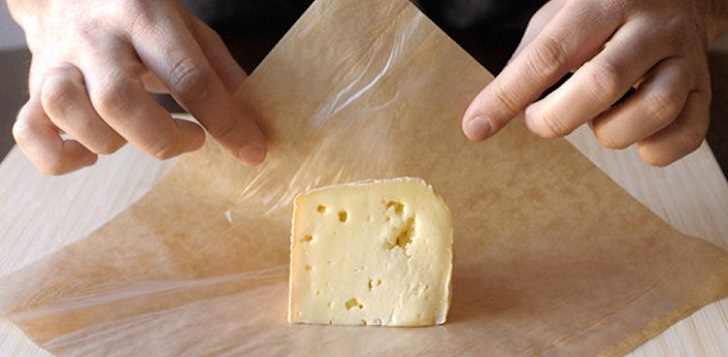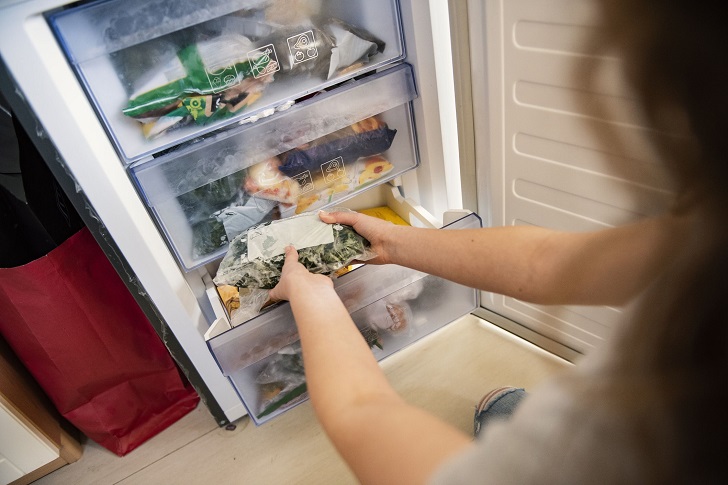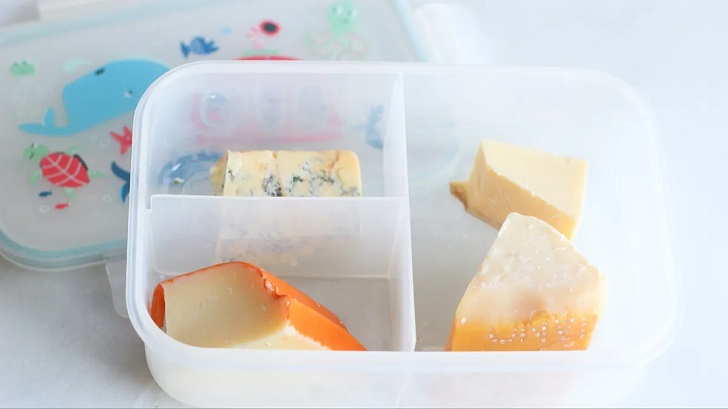Cheese is a beloved and versatile food in various flavors and textures. Whether you prefer a sharp cheddar, a creamy brie, or a pungent blue cheese, proper storage is essential to maintain its quality and prevent spoilage.
Cheese can last longer, retain its original flavors, and avoid developing off-flavors or textures when stored correctly. Below are some of the best ways to store cheese to ensure you get the most out of this delectable dairy product.
Keep It Cool: Refrigeration Is Key
The first and most crucial rule for storing cheese is to keep it cool. Cheese should always be stored in the refrigerator, ideally in the main compartment where the temperature is more stable. The optimal temperature for cheese storage is between 35 to 45°F (1 to 7°C). Avoid storing cheese in the refrigerator door, as it experiences more temperature fluctuations, negatively affecting its quality.

Ricardo Huijon/ Culture | Highly flavoured foods if not properly wrapped will transfer their smell and flavour to other items
Preserve Freshness: Wrapping and Packaging
To preserve the freshness and prevent cheese from absorbing other odors in the fridge, it’s essential to wrap it properly. Use wax paper or parchment paper to wrap semi-hard and hard cheeses, or use cheese-specific paper that allows the cheese to breathe while keeping it protected.
Soft and creamy cheeses, such as brie and camembert, are best stored in their original packaging or wrapped loosely in wax paper. Never use plastic wrap, as it can trap moisture and lead to mold growth.
Embrace Cheese Paper
For cheese fans, investing in cheese paper is a wise decision. Cheese paper is specially designed to regulate humidity and allow the cheese to breathe, ensuring optimal storage conditions. It prevents the cheese from drying out and forming a hard exterior while preserving its natural flavors and textures.

VITRANC/ GETTY IMAGES | The flavor when freezing hard or semi-hard cheese maintains well
Separate and Conquer: Individual Storage
Store different cheeses separately to prevent cross-contamination of flavors and odors. Strong-smelling cheeses, like blue cheese, should be stored away from more delicate varieties like fresh mozzarella. Additionally, using separate containers or resealable bags for each cheese type is a good practice to ensure that flavors and odors do not intermingle.
Opt for Cheese Vault or Airtight Containers
Cheese vaults or airtight containers are excellent options for storing cheese, especially if you plan to keep it for an extended period. These containers maintain consistent humidity levels while allowing the cheese to breathe, keeping it in optimal condition. Cheese vaults are available in various sizes and styles, making them suitable for storing different types of cheese.
Handling Soft Cheeses
Soft cheeses, like goat cheese and feta, are more perishable and require specific care. To store these cheeses, place them in an airtight container and cover them with brine (for feta) or olive oil (for soft goat cheese) to preserve their moisture and flavor. Change the brine or oil regularly and keep the container refrigerated.

Claire Lower/ Life Hacker | The length of time you can keep cheese differs by variety
Let It Breathe: Cheese Dome
A cheese dome or bell is an elegant and effective way to store certain types of cheese. The dome creates a controlled microclimate around the cheese, allowing it to breathe without drying out. This method is particularly suitable for semi-hard and hard cheeses.
Be Mindful of Mold
Mold is a natural part of the cheese-aging process, but it’s essential to differentiate between good and harmful mold. Good mold, like the bloomy rind on brie or camembert, is safe to eat. However, if you notice mold growth on other cheese types or the cheese appears slimy or smells off, it’s best to discard it.




